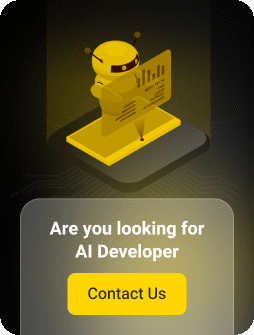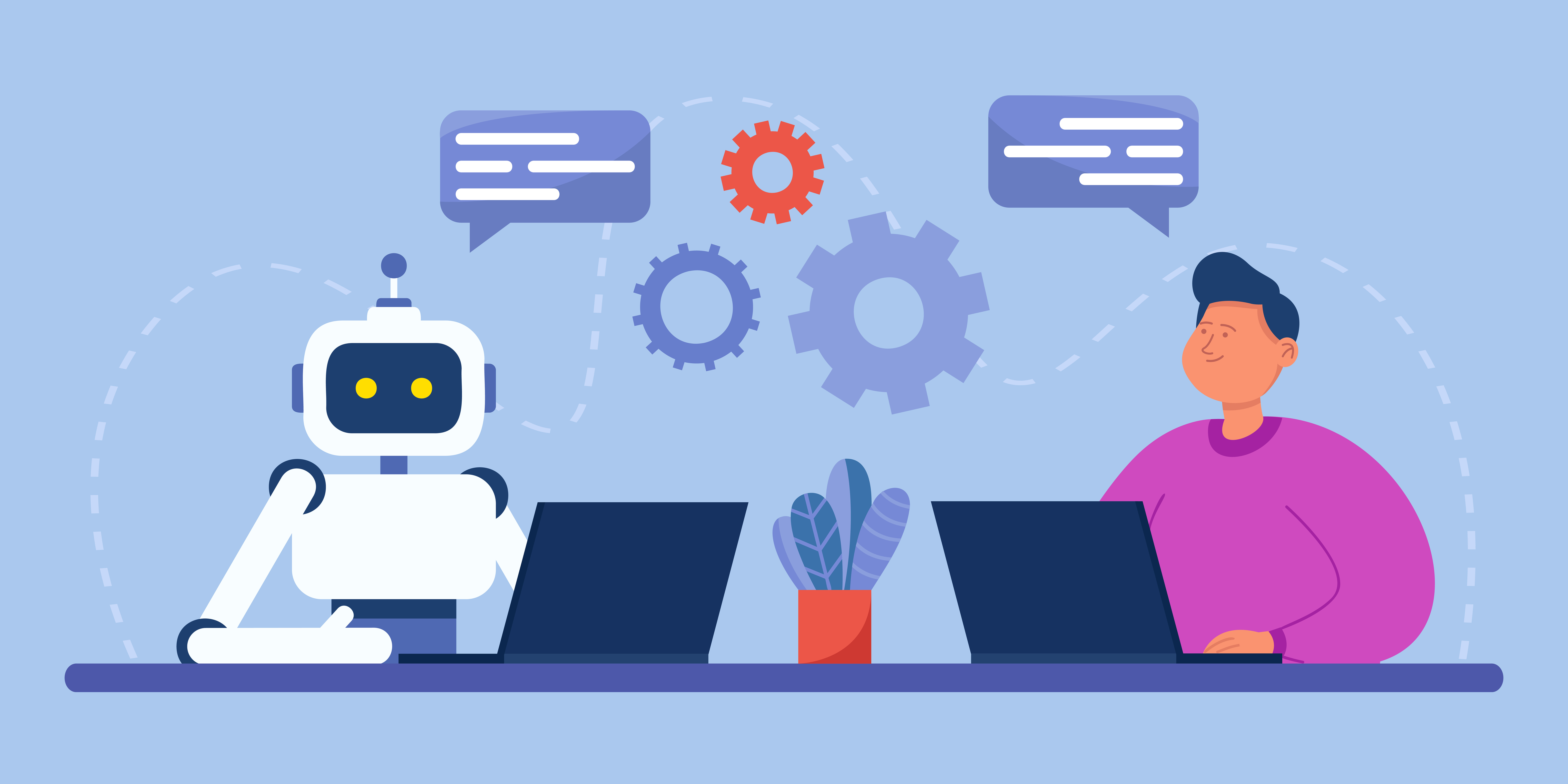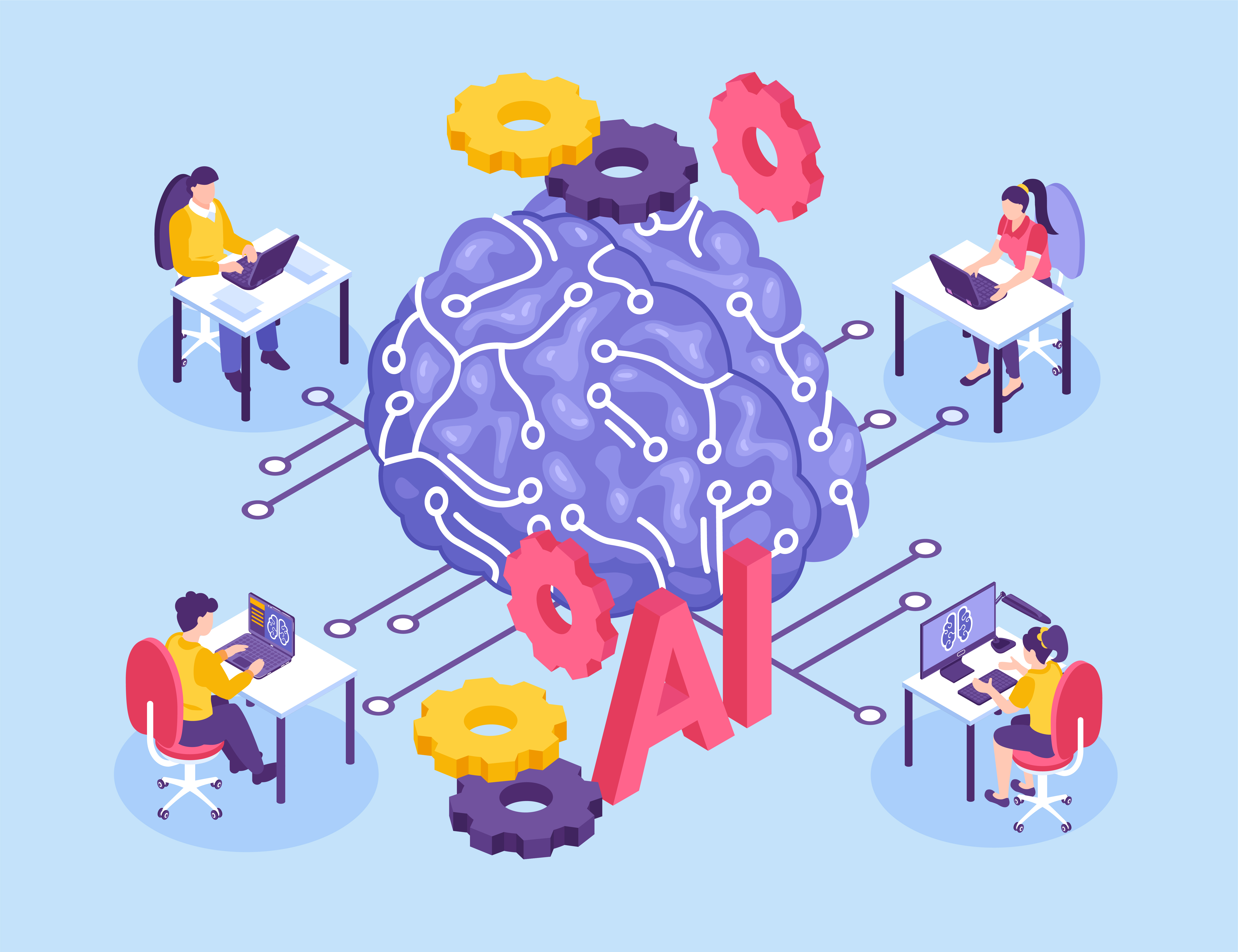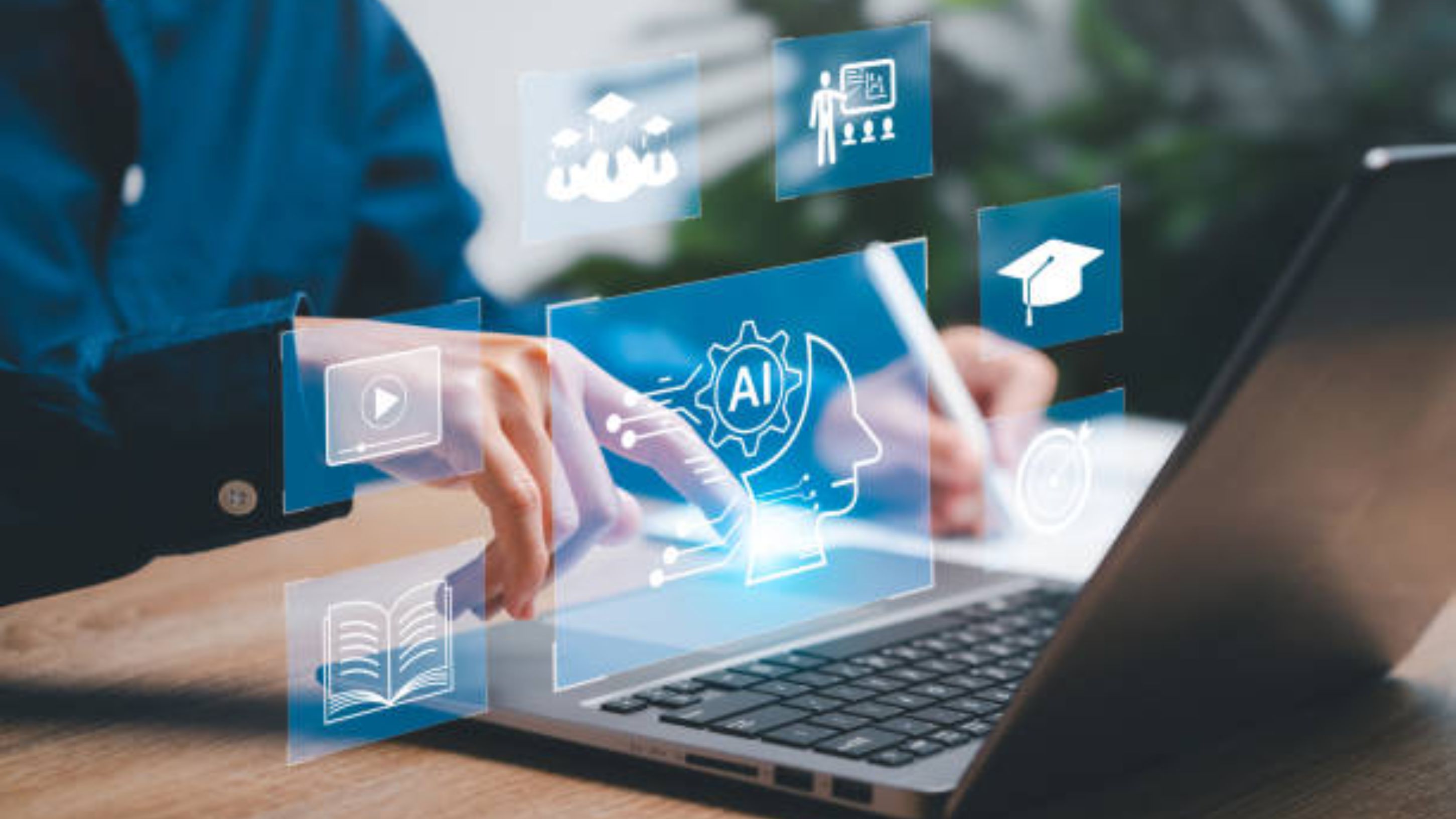Most people equate AI with something that gives quick answers, writes stuff, or helps with voice recognition. And they are right, but they are only seeing the tip of the iceberg. Today, let’s know the reality. Most of the AI available now is still limited. It can respond with words, but doesn't necessarily know. It doesn't have context, gets confused with mixed inputs (like voice and images), and often can't explain why it made a particular decision.
And that's where intelligent AI steps in. AI in 2025 isn't a matter of being quick, it's about being smart, logical, and seeing the world more similarly to us. As multimodal AI models and AI reasoning models have been developed, we're now receiving systems that can reason through problems, work between different forms of data (like images, text, and audio), and even clearly explain themselves.
Let us check out the top trends in AI 2025 that make this possible.
Top Trends Propelling Smarter AI in 2025
The following is what is propelling AI to be smarter, more pragmatic, and so much human-like:
1. Multimodal AI Models
AI no longer deals with text alone. The machines can now detect and combine information through images, sounds, videos, and text at the same time. Consider how you understand a situation by hearing someone's tone, seeing their face, and reading their words. Now AI can do the same.
Real-world example: Google’s Gemini and OpenAI’s GPT-4o can take an image, understand the objects in it, and describe what’s happening, like recognizing someone smiling while holding a gift and saying, “This person looks happy about receiving a present.”
2. AI Reasoning Models
These are the reasoning models that will think about the problem step by step, just like a human would. If you are planning a trip, diagnosing a system failure, or determining why your business revenue has fallen, then reasoning models will provide you answers, and that too with answering “why” as well.
Real-world application: High-end models such as Claude 3 and GPT-4 Turbo are being utilized in sectors such as medicine, law, and finance to respond to intricate questions with logic, rather than superficial information. They join the dots, so decisions are better-informed and results are more precise.
3. Open-Source Language Models
AI development is not limited to large tech corporations anymore. With open source LLM models (such as Meta's LLaMA or Mistral), developers, startups, and researchers all over the world can now access strong models that can be fine-tuned for specific purposes without huge budgets or infrastructure.
Real-world application: A charitable organization in India can employ an open source approach to develop an AI that speaks in local languages and could help farmers with weather notifications or crop recommendations. No proprietary APIs or massive licensing costs necessary. This opens the field and spurs innovation from the ground up.
4. Explainable and Transparent AI
It is not sufficient for AI to be intelligent, it needs to be comprehensible also. Explainable AI (XAI) enables users to view the process and rationale behind a model's decision. This is vitally important in areas such as medicine, finance, or the law, where every action needs to be traceable.
Real-world application: At banks, explainable AI models are used to reason credit approvals or fraud notices. Rather than saying, "Loan rejected," the AI could say, "Rejected due to low income-to-loan ratio and lack of credit history," making the system fairer as well as accountable.
5. Neurosymbolic AI Systems
This is where AI begins to think human-like, not merely learning from patterns, but also obey rules and logic. Neurosymbolic systems combine deep learning (neural nets) and symbolic reasoning (logic-based decision-making). It is like providing AI with both intuition and common sense.
Real-world applications: NASA employs neurosymbolic AI to enable spacecraft to make autonomous decisions during missions. It enables them to learn how to adapt in unpredictable environments without surrendering to safety protocols.
How These Trends Connect
These AI breakthroughs aren't standing alone. Together, they form something much stronger, AI that not only behaves cleverly, but actually acts intelligently in human ways. Every multimodal AI trend and AI reasoning model, when combined, would come up in the best way possible and strengthen one another's potential.
Multimodal Inputs + Reasoning Models = Smarter Interpretation
When AI can process more than a single kind of input - text, images, sound, and video—and reason between them step-by-step, it enables advanced real-world uses. An example of multimodal AI trends is a healthcare AI system evaluating an X-ray image, reading a patient's recorded complaint, scanning medical reports, and then outputting an understandable diagnosis. It's not just seeing or hearing—it's connecting the dots and providing medically sound reasoning. That’s a big leap from today’s single-input bots.
Open-Source LLMs = Democratized Intelligence
Imagine that the same level of advanced AI isn't locked behind proprietary APIs or multi-billion-dollar price tags. Open-source models like Meta's LLaMA or Mistral enable developers and companies everywhere to craft AI bespoke to specific languages, sectors, or local compliance requirements. A Southeast Asian startup, for example, can deploy open-source AI to indigenous dialects or cultural practices in healthcare or customer service, without Silicon Valley monoliths' dependence. This supports innovation at scale and accelerates global AI equity.
Explainable AI = Trust You Can See
Even the smartest AI system is pointless if nobody trusts its results. That is where explainable AI models come to the limelight. By revealing the 'why' of choices, AI can take responsibility, especially in delicate spaces like legislation, insurance underwriting, or government policy-making. Transparency isn't a capability, it's an adoption cornerstone. When AI can offer, "I recommended this treatment because of these risk factors and lab results," experts are going to take it seriously and trust it.
Neurosymbolic Systems = Strong, Consistent Decision-Making
AI that is data-driven (such as neural networks) can learn patterns beautifully, but it does not do so well with rare edge conditions or contradictions. That's where neurosymbolic systems excel. They combine learned intelligence with rule-based thinking. For example, in financial audits, where rigid regulatory thinking is required, AI can unite analysis of historical data with compliance set rules to identify anomalies that would catch conventional AI out. This blended strategy increases dependability and brings AI thinking closer to human thought.
The Bigger Picture: Constructing Practical, Human-Focused AI
These aren't five distinct innovations, they're layers of a more intelligent AI stack. Combined, they create AI systems that are:
- Context-sensitive (due to multimodal comprehension),
- Considerate and intentional (through reasoning),
- Accessible and inclusive (due to open-source),
- Reliable (with explainability),
- Logically sound (due to neurosymbolic design).
This is the basis of applied, people-centric AI machines that don't spit out answers but provide insight, explain their reasoning, and learn to fit the varying needs of actual people and businesses. The AI future isn't merely about brute intellect. It's about practical, comprehensible, and accountable intellect.
Real-World Applications of Smarter AI
Let's see where this intelligent AI is already having a tremendous impact in the real world and how it's positively affecting both businesses and everyday users:
Healthcare
AI has now learned to read medical scans, understand doctors' handwriting, and even detect tone in a patient's tone during teleconsultations. For instance, multimodal models can match X-rays with written descriptions and audio descriptions to help give a more accurate diagnosis. It can shorten the time for diagnosis and improve patient care.
Retail & E-commerce
Have you ever wondered how sites recommend the best product? Smarter AI takes into account what you look for, the way you describe products in reviews, and even product images. By combining all that data, it makes better and personalized recommendations. Not just that, this makes the user experience better, but it also increases retailers' sales.
Education
AI tutors are a reality soon. Consider a virtual tutor who doesn't merely provide the solution to a mathematics problem but shows how it arrived there, step by step. These instruments can be tuned to different speeds of learning, assist in language learning, or even lead to coding practice. This puts on an even playing field for all students from diverse backgrounds.
Customer Support
Say goodbye to frustrating chatbot loops. The latest AI support systems can sense your tone, recognize emotional gestures, and adjust responses accordingly. For example, if you are typing in ALL CAPS or sounding frustrated, the AI knows how to handle the issue and shift to a more empathetic tone. This human-like interaction leads to faster resolutions and happier customers.
By the end of 2025, over 80% of customer interactions will be handled by AI systems that can recognize tone and emotion, up from just 15% in 2022, as stated by Gartner.
How to Get Started with Smarter AI: Practical Steps for Businesses
Now that you know the trends in AI 2025, now what? For most business leaders, the most pressing question is how to get started. Right? First of all, you need to understand that integrating smarter AI in your business is neither difficult nor costly with experts’ help, so no need to worry. You don’t have to be a PHD scholar in AI to understand and implement it better, what you need is just a smart strategy.
This is how you can get started:
1. Identify the Right Use Case
Start by identifying a particular problem that smarter AI can solve more efficiently than existing systems. Could your customer support benefit from smarter reasoning? Would your online store benefit from image-based product suggestions through multimodal input? Begin with one important problem.
Illustration: A retail company might want AI to do more than process product information, but also read customer reviews and sentiment. That's where multimodal AI excels.
2. Choose Between Open-Source vs Proprietary Tools
You don’t need to build from scratch. Open source LLM models like Mistral or LLaMA can be fine-tuned for your domain. For simpler needs, platforms like GPT-4o offer plug-and-play capabilities. You just have to evaluate your data sensitivity, budget, and scale to decide.
Stat to keep in mind: Over 72% of technology-focused companies currently use open source AI models in production, according to a recent McKinsey survey. And 60% of decision makers cited cheaper implementation costs when compared to proprietary options.
3. Prioritize Explainability from Day One
We know AI is thrilling, but your stakeholders, clients, and users must showcase their trust in it. It means nowadays you should not make AI just responsive to the questions, but also should explain the “why” behind it. Introduce explainability features that enable users to "look behind the curtain."
Example: If you're applying AI in finance, condition it to indicate why a loan was approved or rejected. Transparency builds compliance and confidence.
4. Prioritize High-Quality, Multimodal Data
To train wiser systems, expose them to wiser data. Collect high-quality photos, voice samples, or formatted documents—whatever your industry relies on the most. The key is data variety, so your AI learns in a manner that mimics the actual world.
Pro Tip: If your AI learns solely from text, it's restricted. Include photos, videos, or even recordings of support calls to create a real multimodal foundation.
5. Collaborate with an Expert AI Partner
AI is capable, no doubt about it, but it's not always easy to choose and use wisely. Your ideal AI implementation partner (such as us at Eminence!) will assist you with selecting the appropriate tools, training them thoroughly, and using them responsibly.
Suggested Read: The Rise of AI Copilots: What Every Business Should Know in 2025
Ready to Create Smarter AI? Let's Discuss.
At Eminence Technology, we're passionate about smarter AI. Whether you are investigating AI-driven customer care, intelligent learning solutions, or next-generation healthcare assistants, we are here to bring concepts to life.
Our team assists you in developing intelligent systems that think, adapt, and explain, much like humans. From developing multimodal models to integrating explainable AI and open-source LLM fine-tuning, we develop AI that makes sense for your objectives and grows alongside your expansion.
If you are a business executive, a programmer, or simply an enthusiast about what is next for AI, then you should know about these trends. They could change the whole game. And as the best AI development company, we are here to ensure you get the most out of them.
Let's get in touch and begin your smarter AI journey today.
















